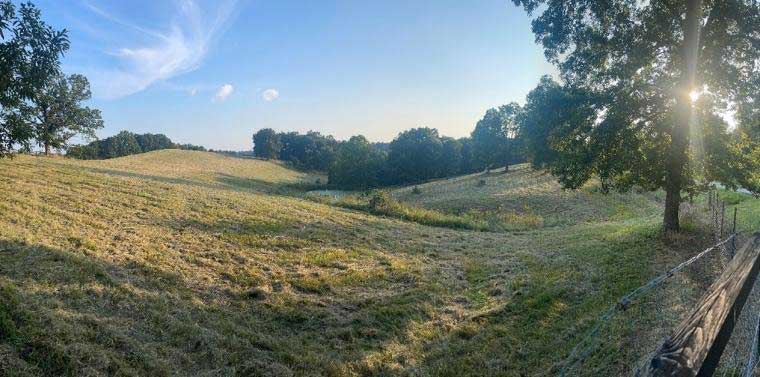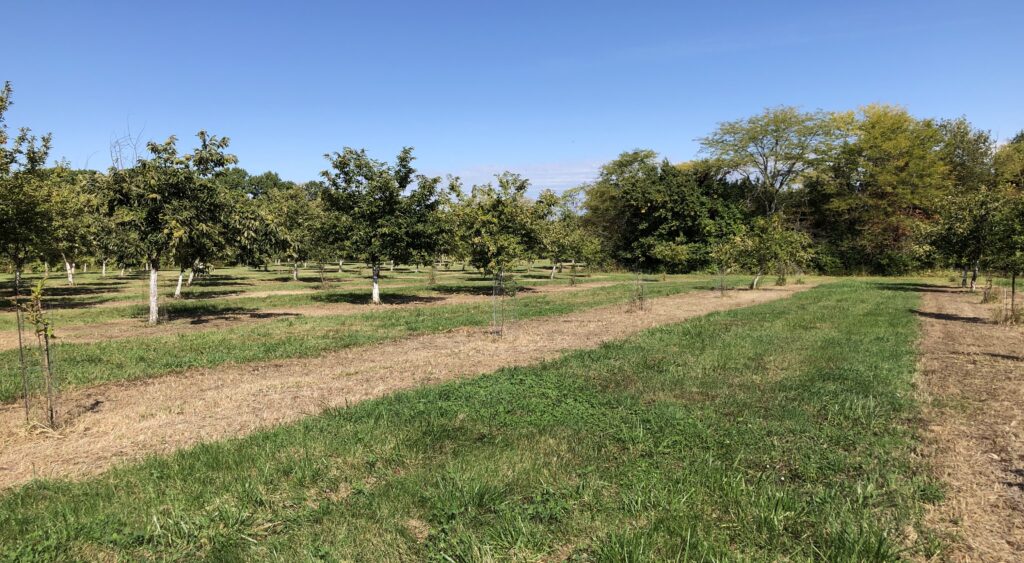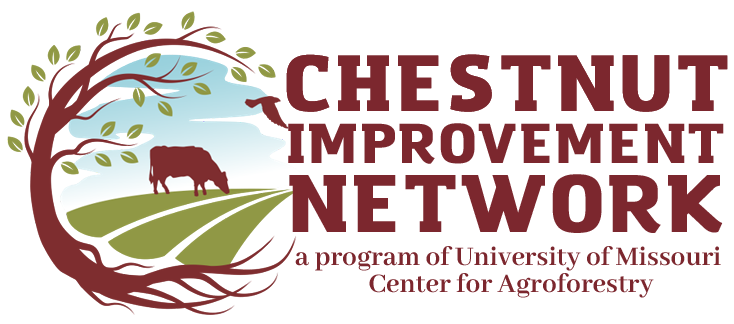Chestnut Orchard Establishment
Site Selection
Slight acidic soil – Soils should be slightly acid (pH 5.5-6.5).
Avoid frost pockets – Most Chinese chestnuts can tolerate -20 °F temperatures when fully dormant, but it is strongly recommended that frost pockets be avoided as planting sites, to avoid injury to vulnerable swelling and emerging buds in the spring. Summits and shoulder slopes should be chosen to allow for good air drainage to safeguard from winter and early spring frost injury
High density layout – It is recommended that seedling orchards be planted at a high density (15 ft x 20 ft or 20 ft x 20 ft) and selection/culling criteria be applied to inform which trees to thin for a final spacing of only the best trees. Orchards planted in grafted cultivars can be planted at 20 ft x 20 ft with eventual thinning to 40 ft x 40 ft. The key to maximize yield is to thin just prior to the time when the tree crowns begin to touch to ensure full sunlight on all sides of each tree throughout their lifespan.

Site Preperation
Consider land-use history – How was the land used and treated prior to preparations for a chestnut order? How has this impacted:
- Soil compaction
- Lack of organic matter
- Ground cover
Soil compaction – Tree roots need oxygen to breath. Oxygen is found in the pores between soil particles, where tree roots grow. Break up the soil compaction by ripping the soil under the plow pan and tilling to prepare the planting bed for the orchard.
Lack of Organic Matter – Organic matter is needed to improve soil structure as well as water holding capacity, nutrient availability, and improve drainage. Organic matter can be added to the soil by application of compost to the site, seeding a biomass cover crop to incorporate into the soil, or seeding a cover crop and allowing the field to remain fallow for a few years.
Ground cover – Consider what is already growing in the field before planting your trees. Tall fescue and other weeds will compete for resources and inhibit tree growth if preparations are not made prior to orchard establishment. Application of herbicide to clear the existing ground cover will provide a blank slate to plant trees. Following tree establishment, sowing sod-forming, shallow-rooted, cool-season grasses (orchard grass, timothy grass, red clover, etc.) or forbs between the planted trees will help to deter the encroachment of tall fescue and weeds into the orchard.
Pre-bearing Orchard Management
Trunk protection – The trunks of young chestnut trees are susceptible to sunscald and deer browse and buck rub until the trunk diameter exceeds 5 inches. To prevent sunscald injury, paint trunks white with 50/50 mixture of white latex interior paint and water or wrap the tree with a white, plastic, spiral tree wrap. Tree tubes for deer protection will also shield from sun scald. Alternatively, young trees may be caged, or an 8 ft tall deer proof fence must be installed around the entire perimeter of the orchard, especially in periods of drought during “nut fill”, typically from late July through August. Irrigation helps to ensure both nut quality and size.
Weed management – Keep all vegetation in a six-foot circle around the tree under control by using mulch or herbicides.

302ABNR Bldg. Columbia, MO 65211




